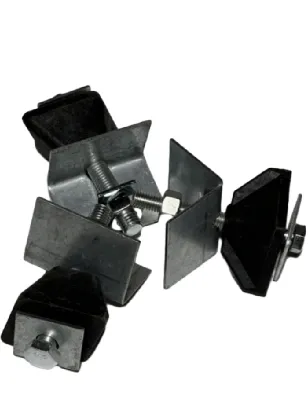loading...
- No. 9, Xingyuan South Street, Dongwaihuan Road, Zaoqiang County, Hengshui, Hebei, China
- admin@zjcomposites.com
- +86 15097380338
- Welcome to visit our website!
Composite Materials for Lightweight Bridge Deck System Design and Performance
FRP Bridge Deck Panels Revolutionizing Infrastructure
In recent years, the construction and infrastructure sectors have witnessed significant advancements through the integration of innovative materials. One such advancement is the adoption of Fiber Reinforced Polymer (FRP) bridge deck panels. These panels have transformed the way engineers and architects approach bridge design and construction, providing a range of benefits over traditional materials. This article will explore the characteristics, advantages, and potential applications of FRP bridge deck panels in modern infrastructure development.
FRP is a composite material made from a polymer matrix reinforced by fibers, typically glass, carbon, or aramid. Its unique characteristics include high strength-to-weight ratios, resistance to corrosion, durability, and ease of installation. These properties make FRP an ideal candidate for bridge deck applications, where weight and longevity are critical factors.
FRP Bridge Deck Panels Revolutionizing Infrastructure
Corrosion resistance is another compelling benefit of FRP bridge deck panels. Conventional materials like steel and concrete are prone to degradation caused by moisture and environmental factors, leading to costly maintenance and replacement. FRP's resistance to corrosion means that structures can maintain their integrity for decades without extensive upkeep. This durability translates into lower life-cycle costs for bridge owners and operators, ultimately benefiting taxpayers and improving public safety by reducing the risk of structural failures.
frp bridge deck panels

The ease of installation of FRP panels further contributes to their attractiveness. These panels can be prefabricated off-site and then transported to the installation location, allowing for quicker assembly and minimizing disruption to traffic and surrounding areas. With shorter construction timelines, FRP bridge deck panels are particularly advantageous for projects that require rapid deployment, such as emergency repairs or new infrastructure in urban settings.
In addition, the versatility of FRP materials opens the door to various design possibilities. Engineers can create intricate shapes and structures that may not be feasible with traditional materials. This flexibility can lead to innovative designs that enhance the aesthetic appeal of bridges while maintaining structural integrity. Moreover, FRP is non-conductive, which can be particularly beneficial in certain environments, reducing the risk of electrical hazards associated with metal structures.
Future applications of FRP bridge deck panels appear promising as research and technology advance. Ongoing studies are focusing on improving the material properties, optimizing production techniques, and broadening its application across different types of bridge designs. As environmental sustainability becomes a more pressing concern, the potential for sustainable sourcing and recycling of FRP materials will likely gain traction, making these materials even more appealing to infrastructure developers.
In summary, FRP bridge deck panels represent a significant leap forward in bridge construction and maintenance, characterized by their lightweight, corrosion-resistant, and easily installable nature. These panels not only contribute to cost savings and reduced construction times but also open up new design possibilities that can enhance the aesthetic and functional aspects of infrastructure projects. As the demand for modern, durable, and efficient bridge solutions continues to rise, FRP materials are set to play a pivotal role in shaping the future of our bridges and transportation networks. The incorporation of FRP technologies into bridge design signifies a move toward more resilient infrastructure that can withstand the challenges of a changing environment and growing urban populations.
-
The Rise of FRP Profiles: Strong, Lightweight, and Built to LastNewsJul.14,2025
-
SMC Panel Tanks: A Modern Water Storage Solution for All EnvironmentsNewsJul.14,2025
-
GRP Grating: A Modern Solution for Safe and Durable Access SystemsNewsJul.14,2025
-
Galvanized Steel Water Tanks: Durable, Reliable, and Ready for UseNewsJul.14,2025
-
FRP Mini Mesh Grating: The Safer, Smarter Flooring SolutionNewsJul.14,2025
-
Exploring FRP Vessels: Durable Solutions for Modern Fluid HandlingNewsJul.14,2025
-
GRP Structures: The Future of Lightweight, High-Performance EngineeringNewsJun.20,2025
